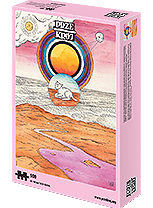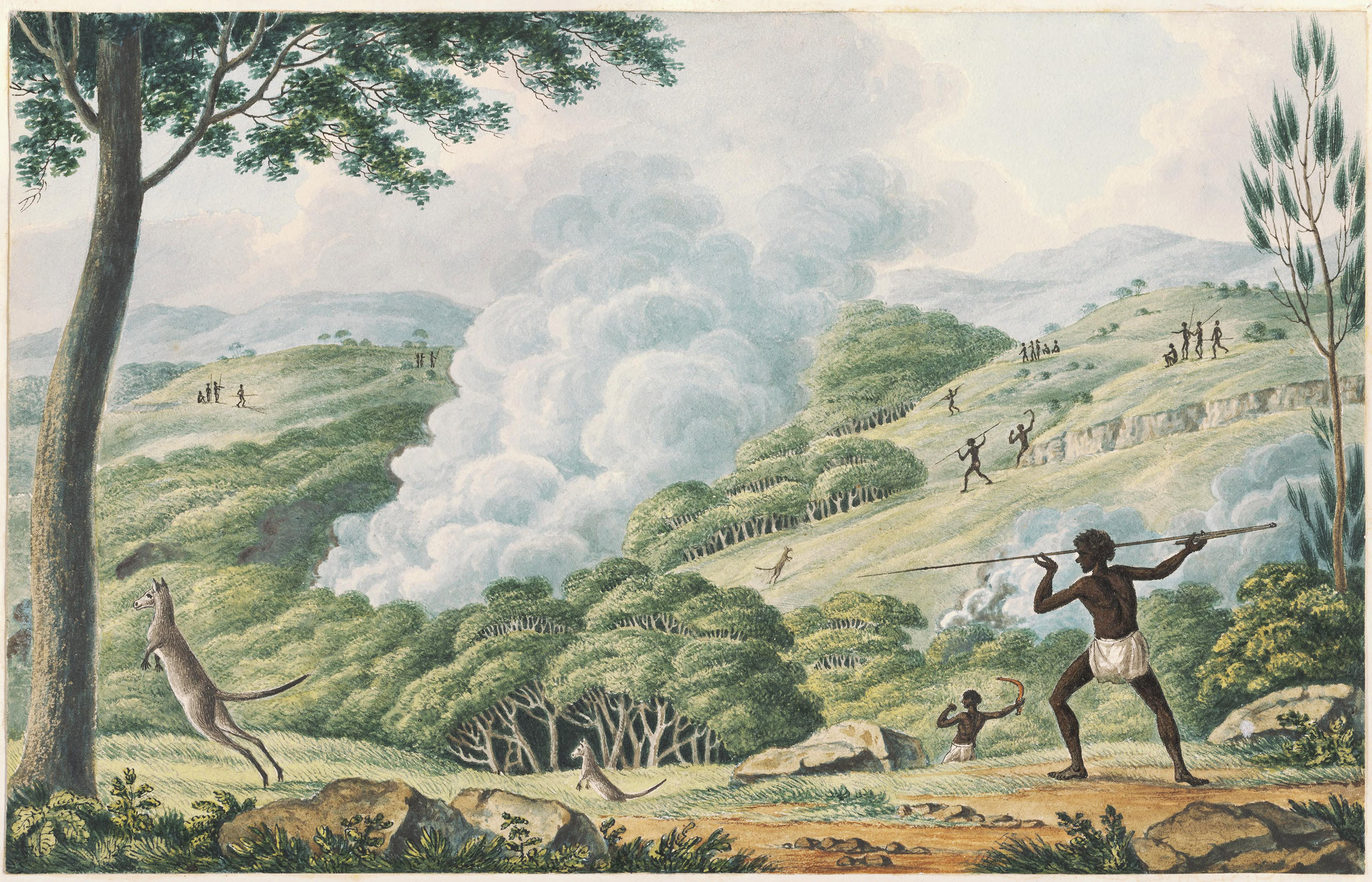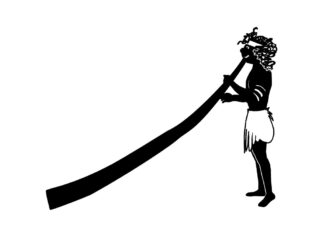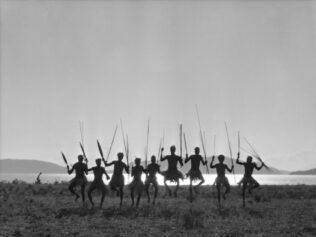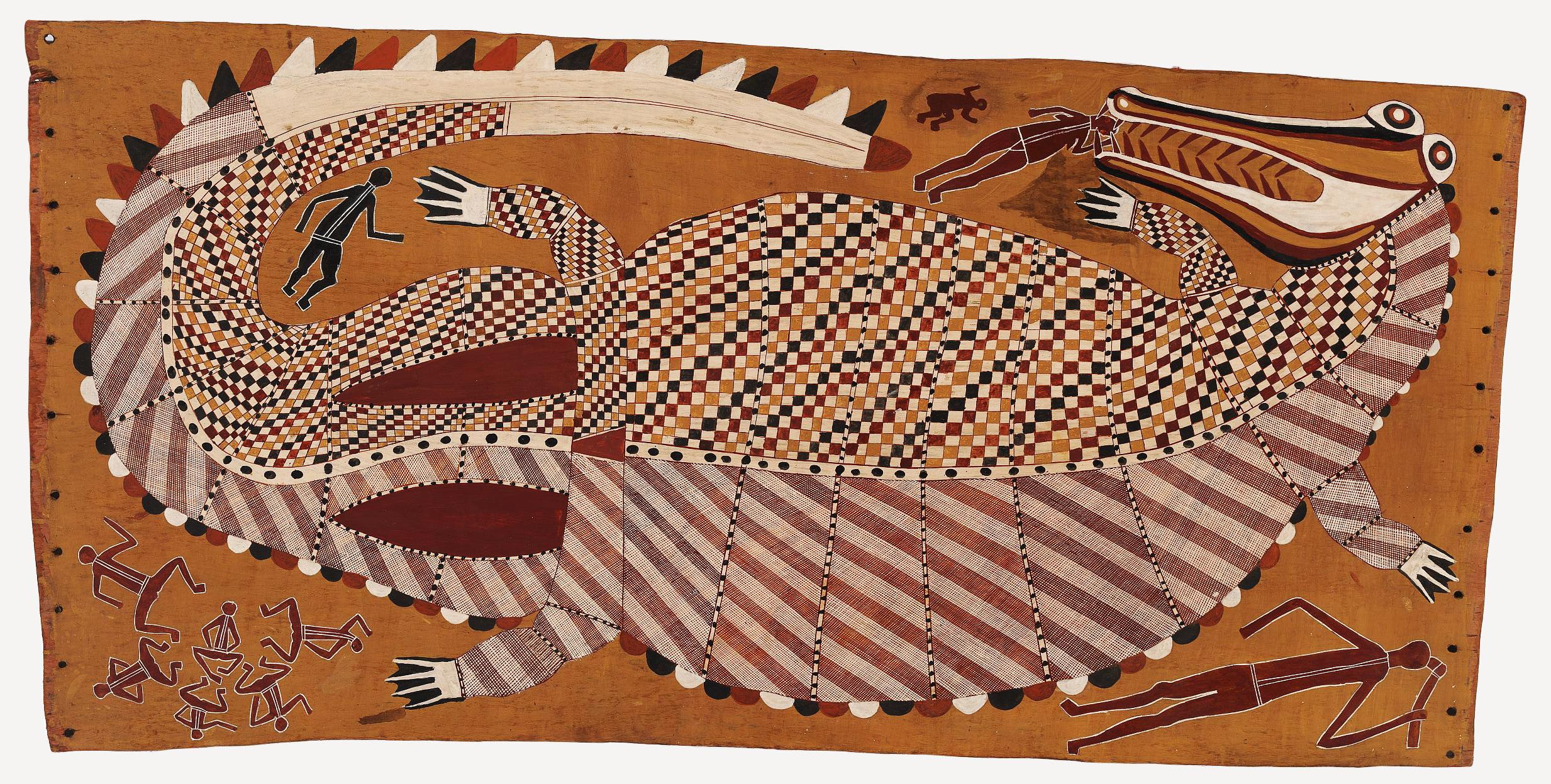
Before the colonists arrived, Australia was a fertile land, whose native inhabitants believed it was their duty to care for the earth. Today the citizens of the continent, threatened by a predatory economy, are slowly starting to discover the wisdom of the ancient Aboriginal people.
Try the yamu! That was one of my main goals on my first visit to Australia 20 years ago. And I wasn’t talking about the purple yam, Dioscorea alata, cultivated in Melanesia, but the yam daisy, or murnong (Microseris lanceolata) – a flower with an edible tuber that was once the staple of the Aboriginal diet. I’d heard a lot about it in anthropology classes and I was convinced that eating murnong would bring me closer to the culture of Australia’s Indigenous peoples.
For this purpose I explored, unsuccessfully, Redfern, an Aboriginal suburb of Sydney that’s saturated with the sadness of displacement. Nobody I asked had even heard of murnong. The only place where I managed to find the tuberous Grail was a vegetarian restaurant in the hipster neighbourhood of Newtown. But that’s not what I was looking for.
I was recently reminded of this episode of youthful disappointment while reading Dark Emu, the celebrated book by Bruce Pascoe. The main theme is Aboriginal Australian agriculture in the pre-colonial era, which, like the yam daisy, almost didn’t survive its encounter with the white man’s civilization.
Indigenous Australians are often presented as a hunter-gatherer society, so until now the category of ‘Aboriginal agriculture’ might have been placed alongside ‘Aztec Equitation’ and ‘Urban Planning for Gypsies’, the pointless disciplines practised by the heroes of Umberto Eco’s Foucault’s Pendulum. Reading Dark Emu and earlier tomes, such as Rupert Gerritsen’s Australia and the Origins of Agriculture or Bill Gammage’s The Biggest Estate on Earth, which Pascoe readily cites after all, makes us question the dominant image of the Aboriginal people as bereft of planning skills, hunting the odd kangaroo in the boundlessness of the outback. Most of all, it makes us ask questions about the sciences’ docility in the face of an order of things imposed by force.
Before the sheep came
Pascoe analyses the accounts of the European newcomers, which demonstrate the presence of cultivation on the continent before colonization. Re-reading the explorers’ records, supported by architectural discoveries, makes us look at Australia as a continent whose inhabitants knew hydrological engineering techniques, cultivated at least three types of plants, carried out controlled burns of large areas of land, and built settlements that provided shelter for thousands of people. So they used agricultural techniques, and were at least approaching a settled way of life. Looking at the notes of the first settlers seems essential insofar as the world they describe of fertile land and crops disappeared very quickly along with the introduction of sheep grazing, which hardened the soil, destroying the locals’ efforts. The rapid displacement of the Aboriginal people from their settlements completed the destruction of the foundations of their economy. After 1860, there are no further records of cultivation.
The basic plant cultivated on land with an appropriately humid climate was the aforementioned murnong. In the writings of Isaac Batey, an early settler in Victoria (1836), we read that the locals raised it in gardens, and the soil dug up to get to the edible tuber formed terraces. This indicates years of cultivation in a single place. In other accounts the description is repeated of upturned soil, loosened and aerated, in regular chequerboard patterns. The notations also include plants gathered in bundles, prepared for threshing. Here they’re speaking of Panicum decompositum, dubbed by the colonists ‘native millet’. Charles Sturt, one of the best-known explorers of the 19th century, was impressed by the bounty of crops stored in stone granaries: storing surpluses is one of the characteristics of a settled way of life. The first mention of cultivation of P. decompositum comes from the area of Lake Torrens – a place of extreme conditions, where the white explorers could barely survive. Another participant in Sturt’s expedition marvels at the harvest of kangaroo grass.
The widespread mentions of cultivation of this proto-grain spurred the Australian anthropologist Norman Tindale to create a map of the lands where millet was sourced. This band covers the land of central Australia, where today there’s no chance of any kind of grain cultivation – the space known today as the Outback and considered completely unsuitable for life, not to mention agriculture. Cultivation on the continent today is limited to significantly smaller areas close to the southern coast, where the climate is milder.
Tindale notes that acquiring grain was so significant for Aboriginal people that the names of certain clans contain the word parana (grass) in various forms. The significance of the seeds is further underlined by the documented fact that they were exchanged among various families.
Phallus or hoe?
The seeds of kangaroo grass were ground into flour between two stones; archaeologists have found examples of these tools in many places on the continent. Recently, the best-known is a site in Cuddie Springs, where Judith Field and Richard Fullagar discovered stone tools from 30,000 years ago. That would make the Aboriginal people the first bakers, beating out the Egyptians, who started to use flour ‘only’ 17,000 years ago.
Even older are the discoveries from Madjedbebe. Remains of Homo sapiens from 65,000 years ago were found there, significantly shifting the date of settlement of Australia. Plant-origin fossils were also found in a cave there, most likely food allowing Homo sapiens to survive in Sahul (the prehistoric continent encompassing New Guinea, Australia and Tasmania). In describing this discovery, Pascoe spares no criticism of Australian research institutes, which aren’t exactly generous in awarding grants for research that deepen knowledge of Aboriginal heritage. He also recalls that the conical stone hoes found in various places on the continent were treated by archaeologists for years as a manifestation of a phallic cult, because according to scientific authorities the Aboriginal people didn’t achieve a level of development that would have allowed cultivation.
The prejudices were also fed by the first white explorers, who saw themselves as the holders of the moral right to settle the lands of societies that were supposedly lower down the ladder of civilization. According to this approach, the savage nomads couldn’t have had homes or raised crops, so despite their observations of these practices, the records are full of euphemisms and misrepresentations: a house that could hold 40 people was called a hut, and the refined engineering of a fish dam on a river is treated as an example of Aboriginal ‘laziness’. The stereotypical image turns out to be stronger than empiricism.
Fire: friend or foe?
Paintings by the white arrivals from the first period of the colonization of Australia show a landscape recalling a manicured English park. Later, art historians perceived in this a stylization, an expression of longing for Victorian civilization. But Pascoe and Gammage say the truth is simpler: it was a faithful representation of the continent inhabited by its Indigenous people, with a chequerboard of fields and forests.
The colonists noted that the most fertile lands were covered by grasses, which the Aboriginal people used, and the poorer soils were left forested. Gammage states that this was planned agriculture, using burning. The duration and frequency of the burns were flexible, adjusted to the climate and the local animals and plants so as not to cause harmful changes to the ecosystem. The thinned-out cover was more attractive for game, improving visibility for hunting. Neighbouring clans were given warning of controlled burns, creating a network of inter-clan understanding.
The basic element binding together the Aboriginal population, numbering half a million people when Cook landed, was a belief system in which the central motif is the Dreamtime – the mythical beginning during which the spirits of the ancestors created the world. That put the Aboriginal people in the position of guards, whose primary role in life was caring for the environment, imbued with a spirit of holiness, and preserving it in a state of balance. One of the strongest totems in this system was earth, and in addition to its other functions, burning was a way to maintain spiritual contact with it. Depriving Aboriginal people of a connection with the land and their territory resulted, and actually still results, from the one-sided colonial viewpoint that lies at the basis of the great misunderstanding.
The bush fires that have recently dominated reports from the Antipodes didn’t happen in the pre-colonial era. This is attested to by examinations of the rings of trees that contain the memory of these ancient times. When in November 2019, just before the notorious fires started, I asked Josh Whiteland from the Wadandi people about the plaque announcing a controlled burn that I encountered in the bush in Margaret River, he explained to me that the government of Western Australia in 2015 had restored the custom known to his family since time out of mind. The Wadandi had been burning the bush since the arrival of Birok, one of the six seasons of the year, equivalent to early summer (December, January). One of the purposes was to prevent uncontrolled fires in the later, hottest and driest season, Bunuru. “Did the whites learn from you?” I asked. “Yes, but very slowly,” he replied.
Eternal peace, modern war
Contemporary Australia has its religion: gastronomy. In the Antipodes, the popularity of fine dining and cooking shows, typical of wealthy countries, assumes a scale that’s unknown elsewhere.
Recently, chefs in the finest restaurants, true celebrities, have begun introducing Aboriginal dishes onto their menus. They include Jock Zonfrillo, owner of Orana, Australia’s best restaurant, and Ben Shewry, the chef at Attica in Melbourne. Outings for ‘bush tucker’, open-air meals with an Aboriginal menu, are also popular. Through the kitchen door, the culture of the continent’s Indigenous inhabitants is making its way into mainstream consumption. Pascoe himself, calling for a return to the sustainable cultivation of forgotten species, bought a farm in Mallacoota (New South Wales) and takes part in yam daisy and native millet recultivation projects, which he hopes to interest the agricultural sector in.
The author of Dark Emu has vast ranks of enthusiastic supporters on university campuses, where his account of the Aboriginal people’s environmentally friendly, sustainable economy seems to provide a solution to the threats posed by climate change and excessive exploitation of the environment. But his popularity, supported by very good book sales, doesn’t please everybody. He’s attacked by conservative commentators defending the colonial legacy, who don’t enjoy the positive evaluation of the native culture. These critics attempt to undermine Pascoe’s Aboriginal identity, which he has claimed for more than 30 years. The writer was raised in a white working-class family, but a mention by his uncle of Aboriginal roots prompted him to follow this trail. He found Indigenous ancestors on both his mother’s and his father’s side – from the Yuin, Palawa and Bunurong tribes. In 1987, at the age of 40, he declared his identification with his Aboriginal ancestors.
Indigenous society is also divided on the subject of Pascoe. The Aboriginal lawyer Josephine Cashman has joined the attacks of his main white adversary, the conservative commentator Andrew Bolt. A representative of the elders of Tasmania’s Palawa people denied the author of Dark Emu the right to membership. But Pascoe has the support of the majority of communities, including the Yuin people, whose membership he claims. Cashman has paid for her attacks with her position on an advisory council to Australia’s Ministry of Aboriginal Affairs. In the background of the disputes over identity are hidden the constant potential of reparations for land that was taken, and the possibility of using state funds to support the cultural heritage of the continent’s original residents.
Another subject that arouses opposition from conservative circles is the spirit of communalism and promotion of social relationships not based on rivalry and unlimited exploitation of natural resources. In Dark Emu, we find a description of a system of fisheries based on stone canals creating small ponds and weirs constructed by the Ngemba people in Brewarrina. The date of its creation has not been unequivocally determined, but some believe it happened 40,000 years ago, which would make it the oldest such structure in the world. It was used during inter-clan meetings, which could bring together as many as 5000 people. Each family had its own fishing area, built to allow some fish to move downstream so the next fisherfolk could meet their needs. Similar structures are also found near Lake Condah, around which have been found the ruins of Aboriginal constructions attesting that here, too, were held gatherings of up to 10,000 people.
Similar, smaller fish traps – or rather their remnants, because most of the stones found new homes in walls and other structures built by later settlers – have been noted across the continent. Here, what’s significant is the sustainable approach to natural resources, which seems to the critics of Dark Emu to be a beachhead of communist revolution, though the author himself warns that it’s more an opposition between capitalism and ‘Aboriginism’. The latter is marked by communitarianism and peaceful coexistence, values so needed by the modern world. Shouldn’t humanity, which today is at a turning point in its development, look to values as old as the Dreamtime?
Translated from the Polish by Nathaniel Espino

